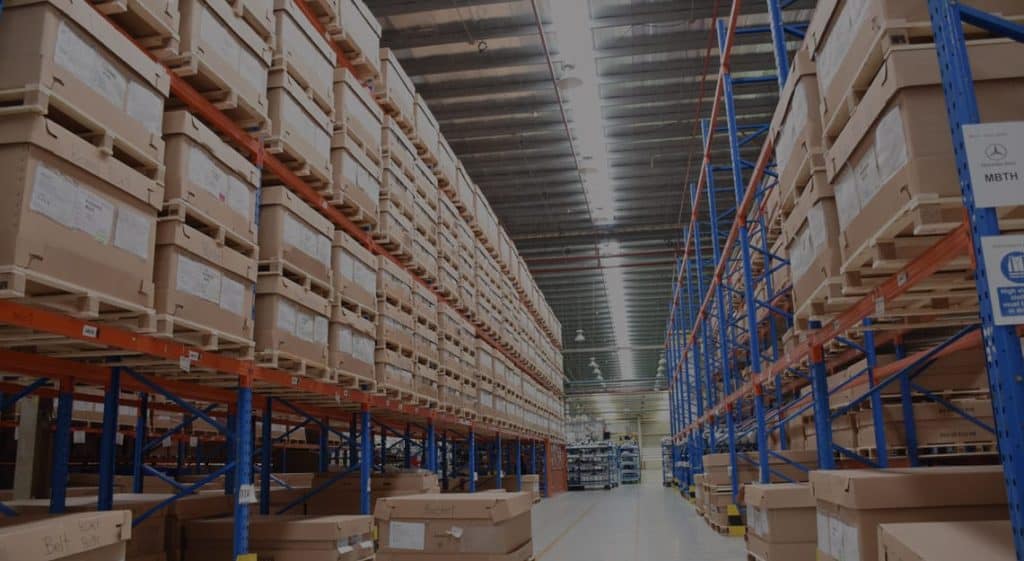Pallets: Selecting the Best Option for Your Rack
The concept of working smarter not harder applies to practically every industry and work activity. This includes work performed in the warehouse. The goal is keeping an advantage on your competition and maintaining a profitable bottom line. Working smarter not harder applies all the way down to deciding the best rack system and pallet for your application.
Wait, you mean there are options for pallets when it comes to racking? Well, yes, but let’s be clear; the largest determining factor for selecting pallets is the load. Are you storing containers of goose down or foam rubber? Or will the pallet platform support several 40-inch, 250 lb. gears? Your load makes a big difference.
Pallet options
Modern Materials Handling magazine publishes an annual report on what pallets its readers use. It should come as no surprise that wood pallets are the most popular. The 2017 survey reported 93 percent of companies surveyed use wood pallets to store and transport product. Plastic pallets are also popular, garnering 45 percent usage followed by 18 percent who also use a wood composite pallet and 10 percent using metal pallets.
But what works best for storage in pallet racks? The answer is simple: it depends.
Wood pallets
Wooden pallets are the most popular for one main reason—cost. While subject to fluctuations in the market, wood pallets are readily available. Wood pallets have a price point between $5 and $25, depending on whether the pallet is recycled (used) or new. Pricing assumes pallets are in good condition. This translates into a low-cost option for protecting products and if after a single use the pallet is no longer usable, the investment was low enough to have minimal impact on overall cost.
Most wood pallets are considered a “one-way” or single-use pallet. It is possible to get more use of the pallet, but the cost is generally covered in the first trip, making additional trips/use almost free. The challenge with wood pallets is durability. These pallets splinter and/or chip due to use and abuse in the warehouse, often from forklifts. This frequently weakens the wood pallet making each increasingly unstable while creating safety and maintenance concerns for employees and equipment.

Plastic pallets
Plastic pallets are more expensive than wood pallets, sometimes two, three, or four times or more expensive. This is why many companies investing in plastic pallets consider the product a multiple-use item. Plastic pallets offer benefits standard wood pallets lack. Durability is one. Plastic pallets generally are more resistant to abuse occurring in the warehouse. There is no splintering to create safety issues for workers or machinery as compared to wood pallets. Many companies use plastic pallets up to 20 times longer than their wood counterpart does. However, plastic pallets cannot always tolerate some loads when resting in pallet racks.
Wood composite
Stronger and slightly more durable, composites provide an alternative to traditional wood pallets. These pallets are more resistant to damage and stronger. The investment is also more.
Metal pallets
These pallets are the most expensive option, often costing hundreds of dollars. A metal pallet is the most durable and best able to handle the demands of heavy loads. The metal pallet is generally used for very specialized applications.
Pallets and your rack
So, which is the best pallet option for racks? Again, it depends. The main factors you must consider are cost, load and length of time the pallet is in the rack. We have already discussed cost, so let’s look at load and the length of time pallets are stored in racks.

Load
As mentioned earlier, what is sitting on the pallet determines the best pallet option for your rack. Why? It’s all about a concept called deflection. You see, deflection affects both pallet and rack beams due to the amount of weight applied. Deflection is the amount of “bending” a pallet experiences as a load rests on it while in a rack over a period of time. The heavier the load combined with the length of time a pallet rests on a rack will cause deflection or sagging. This deflection puts the load at risk for damage and increases the potential difficulty in removing the pallet from the rack.
All pallets regardless of material type experience deflection. However, some materials handle deflection better than others. Wood and metal often perform better in racking situations than does plastic or some wood composites. Deflection may not be an issue if pallets sit in racks for only a matter of hours instead of months.
The last concern is one that relates to deflection. It is the type of support on a rack. Many racks use a rail system where a pallet is supported on the sides but have no support in the middle of the rack. This increases the likelihood of deflection. So, some plastic pallets may sag and not work on this type of rack.
Wood, plastic, composite, metal – which pallet provides the value for storing and shipping products in a warehouse setting? All have pros and cons.